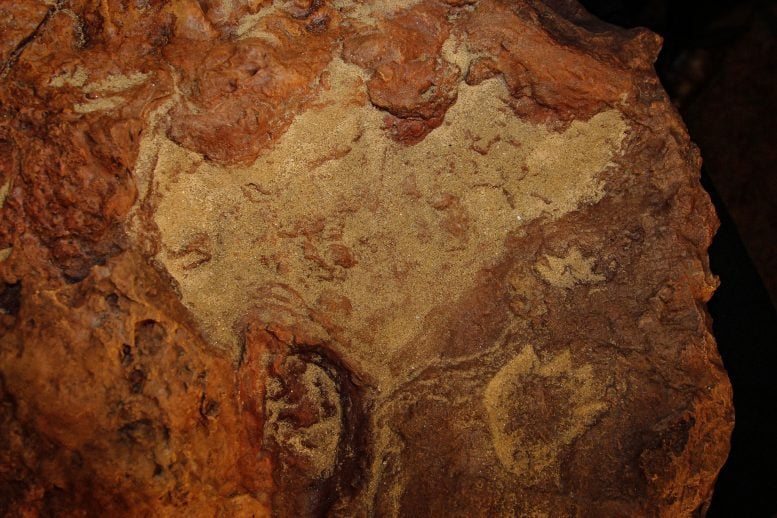
NASA’s Goddard Space Flight Center has uncovered a sandstone block that features over 70 tracks of dinosaurs and mammals from over 100 million years ago.
A slab of sandstone discovered at NASA’s Goddard Space Flight Center contains at least 70 mammal and dinosaur tracks from more than 100 million years ago, according to a new paper published January 31 in the journal Scientific Reports. The find provides a rare glimpse of mammals and dinosaurs interacting.
The tracks were discovered by Ray Stanford — a local dinosaur track expert whose wife, Sheila, works at Goddard. After dropping off Sheila at work one day in 2012, Stanford spotted an intriguing rock outcropping behind Shelia’s building on a hillside. Stanford parked his car, investigated, and found a 12-inch-wide (30-centimeter-wide) dinosaur track on the exposed rock. Excavation revealed that the slab was the size of a dining room table and examination in the ensuing years found that it was covered in preserved tracks.
The remarkable Goddard specimen, about 8 feet by 3 feet (2.4 meters by 0.9 meters) in size, is imprinted with nearly 70 tracks from eight species, including squirrel-sized mammals and tank-sized dinosaurs. Analysis suggests that all of the tracks were likely made within a few days of each other at a location that might have been the edge of a wetland, and could even capture the footprints of predator and prey.
“The concentration of mammal tracks on this site is orders of magnitude higher than any other site in the world,” said Martin Lockley, paleontologist with the University of Colorado, Denver, a co-author on the new paper. Lockley began studying footprints in the 1980s, and was one of the first to do so. “I don’t think I’ve ever seen a slab this size, which is a couple of square meters, where you have over 70 footprints of so many different types. This is the mother lode of Cretaceous mammal tracks.”
After Stanford’s initial find, Stephen J. Godfrey, curator of paleontology at the Calvert Marine Museum, coordinated the excavation of the slab and produced the mold and cast that formed the basis of the scientific work.
The first track Stanford found was of a nodosaur — “think of them as a four-footed tank,” Stanford said. Subsequent examination revealed a baby nodosaur print beside and within the adult print, likely indicating that they were traveling together. The other dinosaur tracks include: a sauropod, or long-necked plant-eater; small theropods, crow-sized carnivorous dinosaurs closely related to the Velociraptor and Tyrannosaurus rex; and pterosaurs, a group of flying reptiles that included pterodactyls.
“It’s a time machine,” Stanford said. “We can look across a few days of activity of these animals and we can picture it. We see the interaction of how they pass in relation to each other. This enables us to look deeply into ancient times on Earth. It’s just tremendously exciting.”
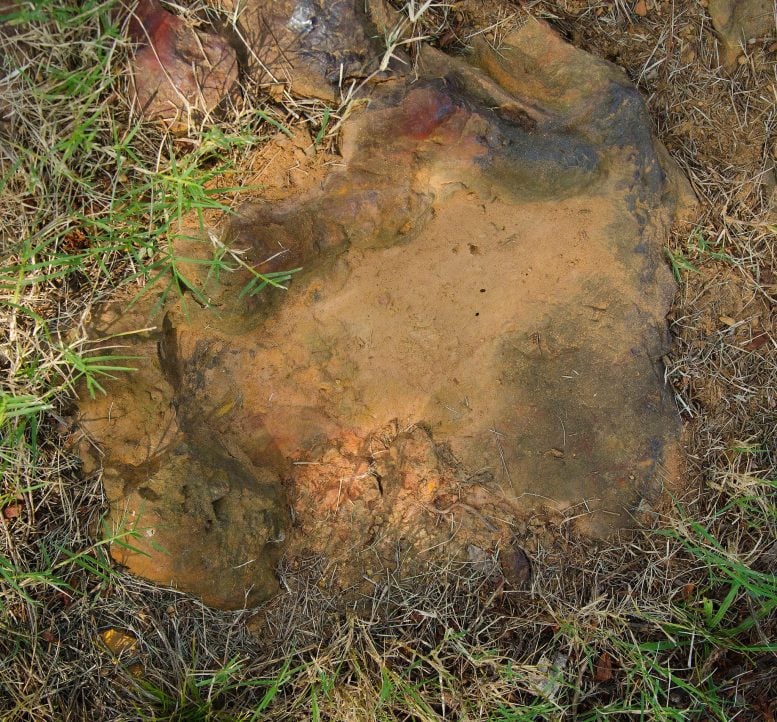
About 110 million light years away, the bright, barred spiral galaxy NGC3259 was just forming stars in dark bands of dust and gas. On Earth, a plant-eating dinosaur left footprints in the Cretaceous mud of what would later become the grounds of NASA’s Goddard Space Flight Center in Greenbelt, Md. Credit: NASA/Goddard/Rebecca Roth
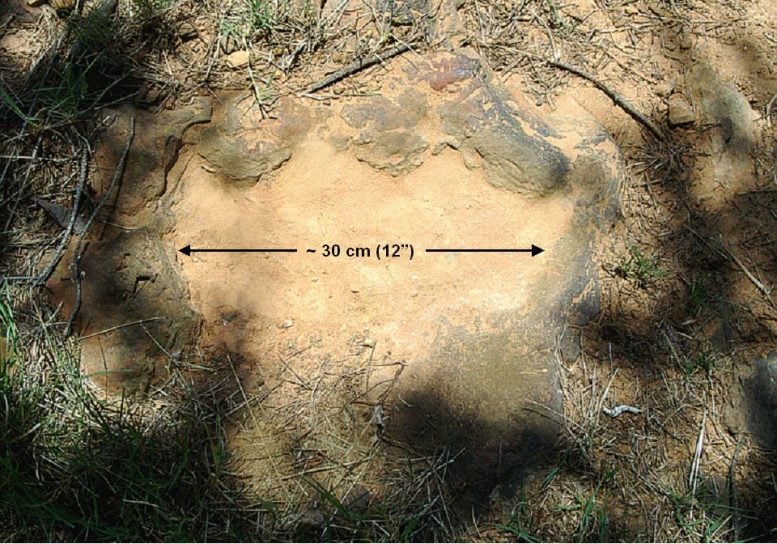
About 110 million light years away, the bright, barred spiral galaxy NGC3259 was just forming stars in dark bands of dust and gas. On Earth, a plant-eating dinosaur left footprints in the Cretaceous mud of what would later become the grounds of NASA’s Goddard Space Flight Center in Greenbelt, Md. Credit: Ray Stanford
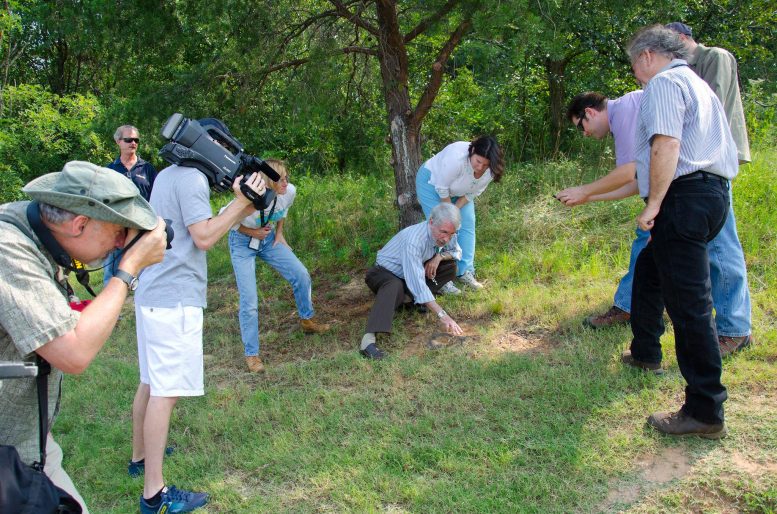
Local dinosaur hunter Ray Stanford points out the impression to Goddard officials and members of local media. Credit: NASA/Goddard/Rebecca Roth
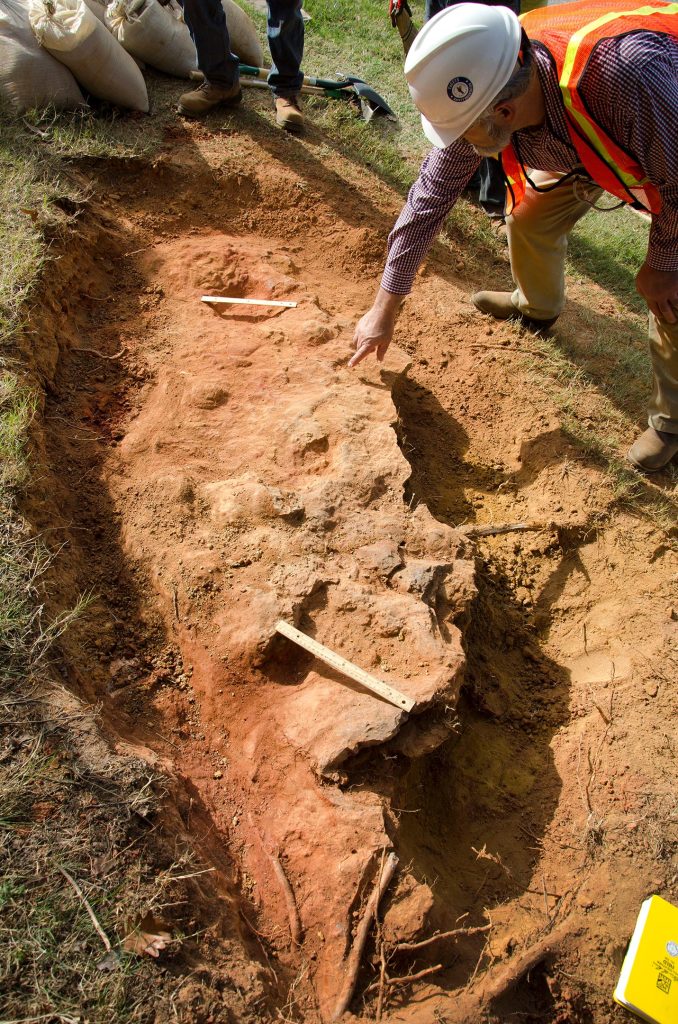
Goddard’s consultant paleontologist Dr. Lee Monnens verified the track and discovered additional footprints hiding under a thin layer of topsoil in the same rock layer on October 23, 2012. Credit: NASA/Goddard/Rebecca Roth
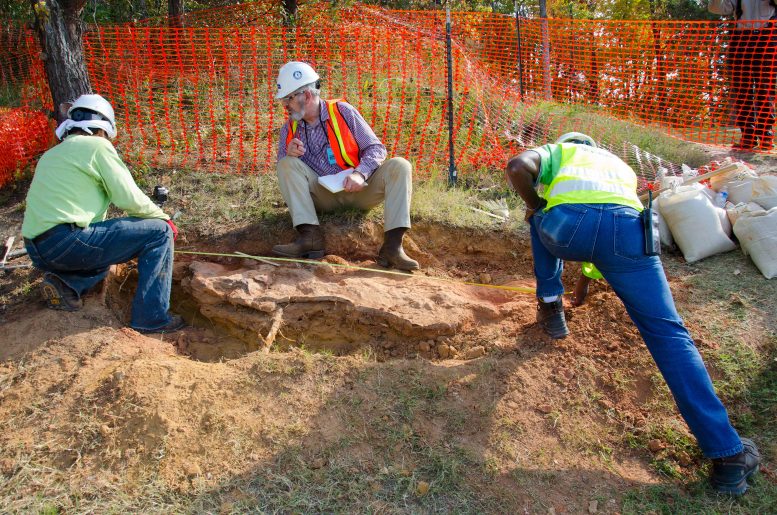
Goddard’s consultant paleontologist Dr. Lee Monnens verified the track and discovered additional footprints hiding under a thin layer of topsoil in the same rock layer on October 23, 2012. Credit: NASA/Goddard/Rebecca Roth
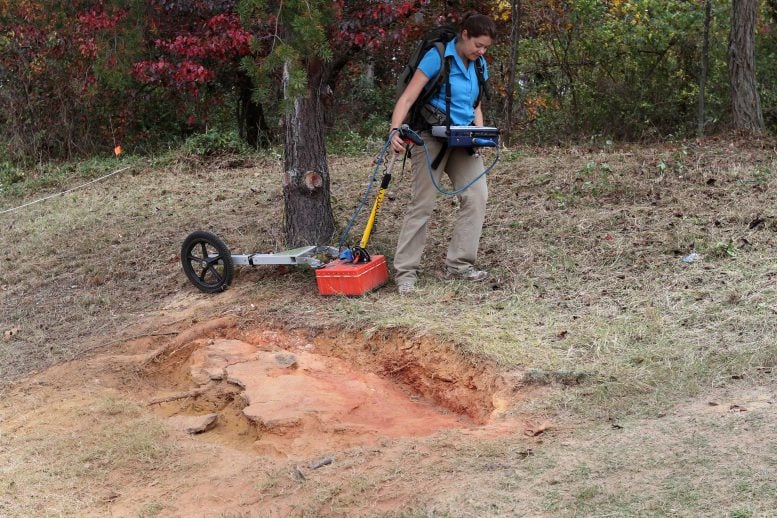
In December, 2012, Goddard scientists using ground penetrating radar showed that the sedimentary rock layer bearing these prints was preserved in its original location, but that investigation found no additional indications of locations of dinosaur track specimens of scientific value. Credit: NASA/Goddard/Michelle Handleman
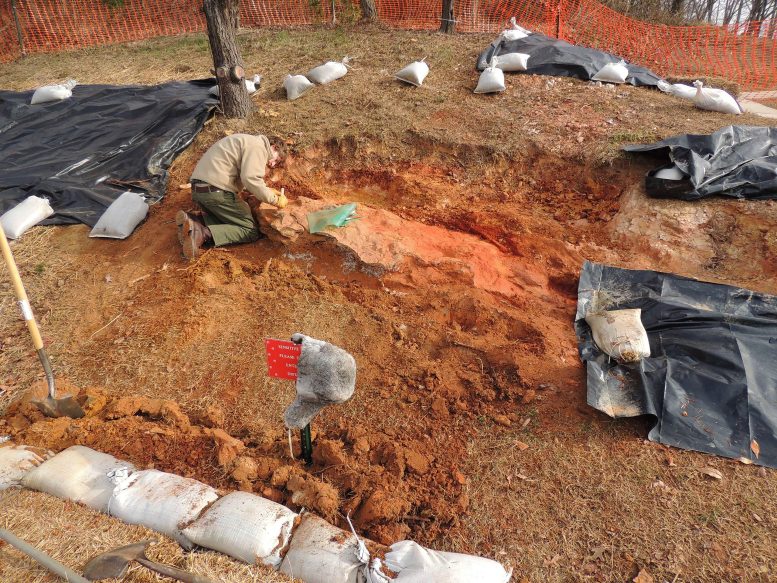
Michael Godfrey beginning the process of quarrying down around the footprint bearing layer. Photo taken December 31, 2012. Credit: Stephen Godfrey
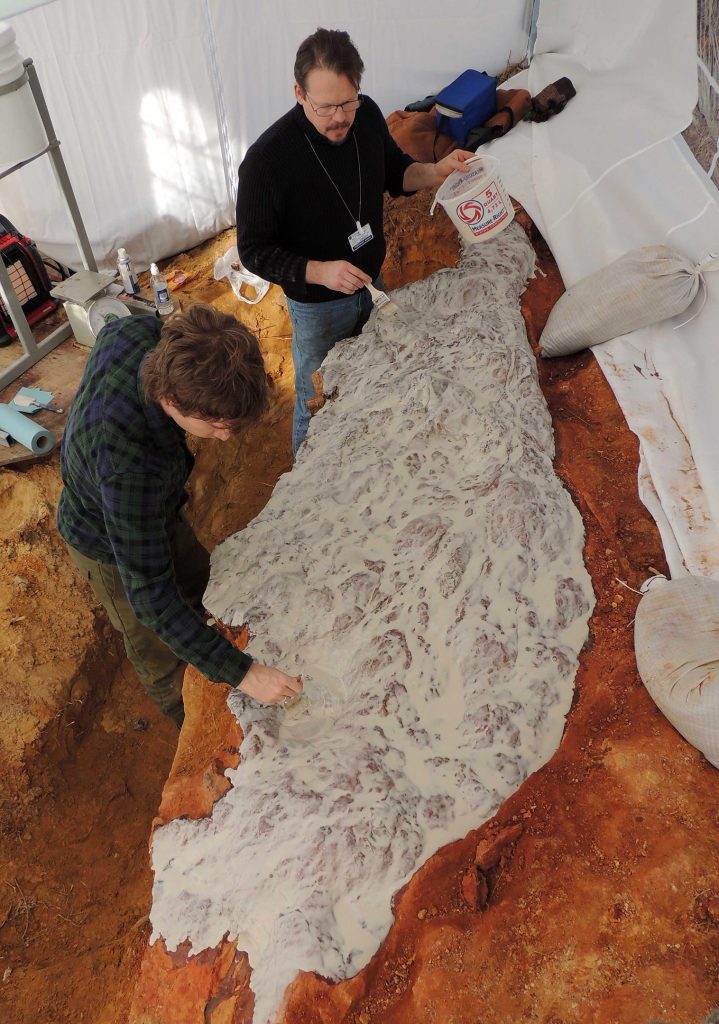
Michael Godfrey (left) and Perry Carsley (center) are coating the dinosaur footprints with a silicone rubber molding compound. A mold was made of the prints so that in addition to preserving the original rocky surface, cast replicas of the surface could also be made. Photo taken January 5, 2013. Credit: Stephen Godfrey
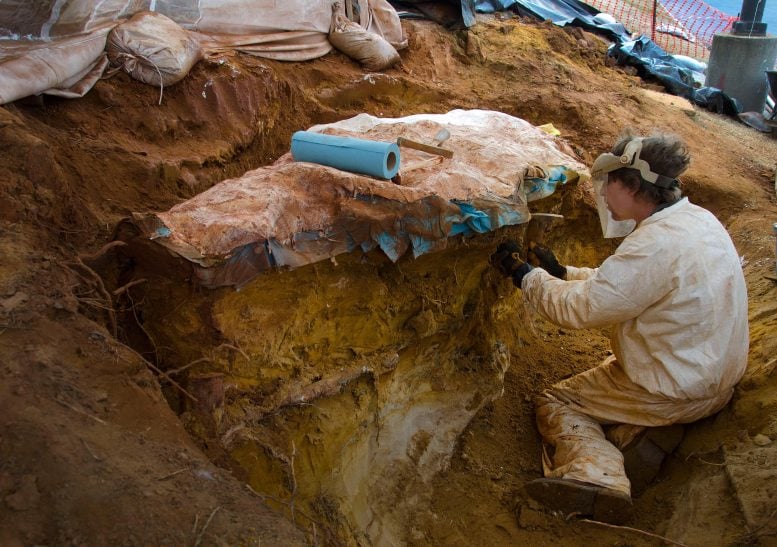
Seen here we have started to encase the dinosaur footprints in what is known as a field jacket. A field jacket is much like a cast that a doctor would place on a broken arm or leg. Our field jacket consisted of many layers of burlap soaked in plaster-of-Paris into which we also laminate metal pipes to act like splints for additional support. Here Michael is working to remove the very hard sandstone layer below the iron-rich clay layer in which the prints were preserved. Photo taken on January 7, 2013.
Credit: NASA/GSFC/Rebecca Roth
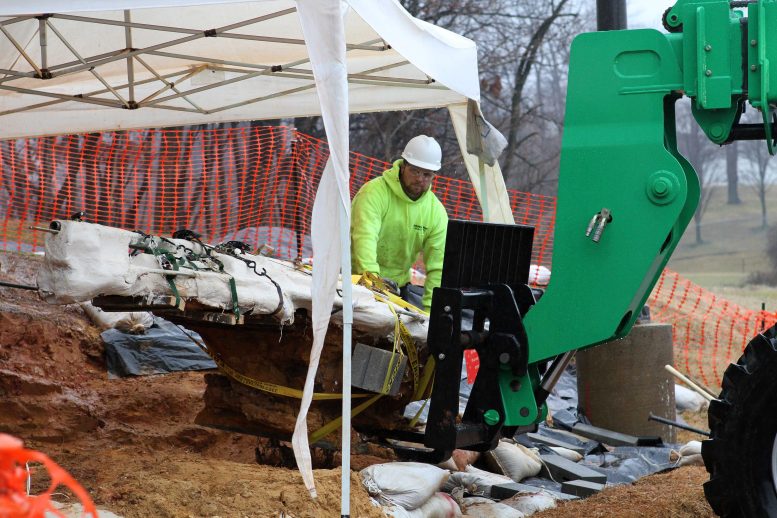
The entire find, containing at least three dinosaur footprints, is approximately seven feet long and three feet across at its widest point. Additionally, the footprint-rich layer is bonded to a separate layer of iron-rich sandstone that complicated the efforts to extract and preserve it. Before removing the rock layer, Godfrey made a silicon-rubber cast of the prints, then jacketed the entire find in multiple layers of plaster-soaked burlap (i.e. just like a cast) to add rigidity and to further ward against breakage during transport. Galvanized steel pipes wrapped into the jacket acted like splints to provide additional structural support. Credit: NASA/GSFC/Rebecca Roth
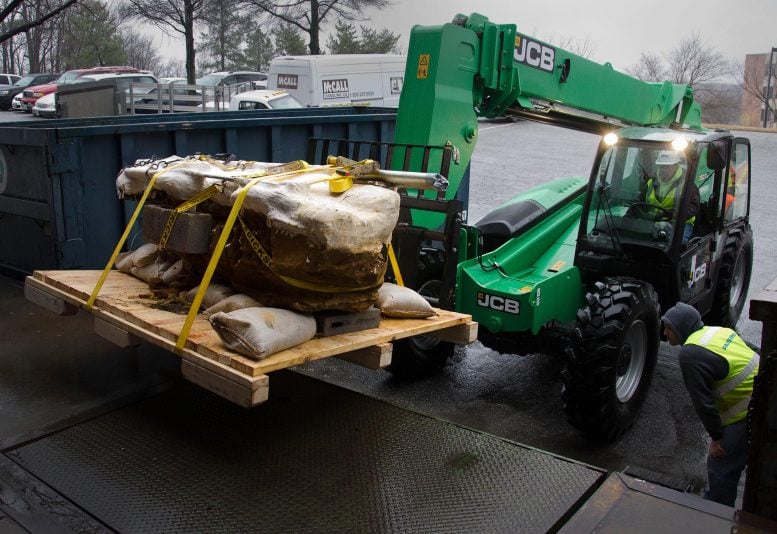
The combined weight of the footprint, field jacket material and surrounding soil that was removed was estimated to be approximately 3,000 pounds, so extra care was taken in moving it to avoid damaging the rather extraordinary find. Credit: NASA/GSFC/Rebecca Roth
The dinosaur tracks are impressive, but it is the collection of mammal tracks that makes the slab significant. At least 26 mammal tracks have been identified on the slab since the 2012 discovery — making it one of two known sites in the world with such a concentration of prints. Furthermore, the slab also contains the largest mammal track ever discovered from the Cretaceous. It is about four inches square, or the size of a raccoon’s prints.
Lockley and Stanford said most of these ancient footprints belong to what we would consider small mammals — animals the size of squirrels or prairie dogs. Most Cretaceous mammals discovered to date have been the size of rodents, their size usually determined only from their teeth. “When you have only teeth, you have no idea what the animals looked like or how they behaved,” Lockley said.
Lockley and Stanford believe the wide diversity and number of tracks show many of the animals were in the area actively feeding at the same time. Perhaps the mammals were feeding on worms and grubs, the small carnivorous dinosaurs were after the mammals, and the pterosaurs could have been hunting both the mammals and the small dinosaurs.
The parallel trackway patterns made by four crow-sized carnivorous dinosaurs suggests they were hunting or foraging as a group. “It looks as if they were making a sweep across the area,” Lockley said.
Several of the mammal tracks occur in pairs, representing hind feet. “It looks as if these squirrel-sized animals paused to sit on their haunches,” Lockley said. The team gave the new formal scientific name of Sederipes goddardensis, meaning sitting traces from Goddard Space Flight Center, to this unusual configuration of tracks.
“We do not see overlapping tracks — overlapping tracks would occur if multiple tracks were made over a longer period while the sand was wet,” said Compton Tucker, a Goddard Earth scientist who helped with the excavation, coordinated bringing in multiple scientists to study the tracks, and has worked to create a display of the cast in Goddard’s Earth science building. “People ask me, ‘Why were all these tracks in Maryland?’ I reply that Maryland has always been a desirable place to live.”
What is now Maryland would have been a much hotter, swampier place in the Cretaceous, when sea levels would have been hundreds of feet higher than today. As scientists continue to study the slab and compare the tracks to others found in the area and around the world, they will continue to discover more about prehistoric life that existed here.
“This could be the key to understanding some of the smaller finds from the area, so it brings everything together,” Lockley said. “This is the Cretaceous equivalent of the Rosetta stone.”
In addition to Stanford and Lockley, Tucker, Stephen Godfrey and Sheila Stanford were also co-authors on the Scientific Reports paper.
Reference: “A diverse mammal-dominated, footprint assemblage from wetland deposits in the Lower Cretaceous of Maryland” by Ray Stanford, Martin G. Lockley, Compton Tucker, Stephen Godfrey and Sheila M. Stanford, 31 January 2018, Scientific Reports.
DOI: 10.1038/s41598-017-18619-w

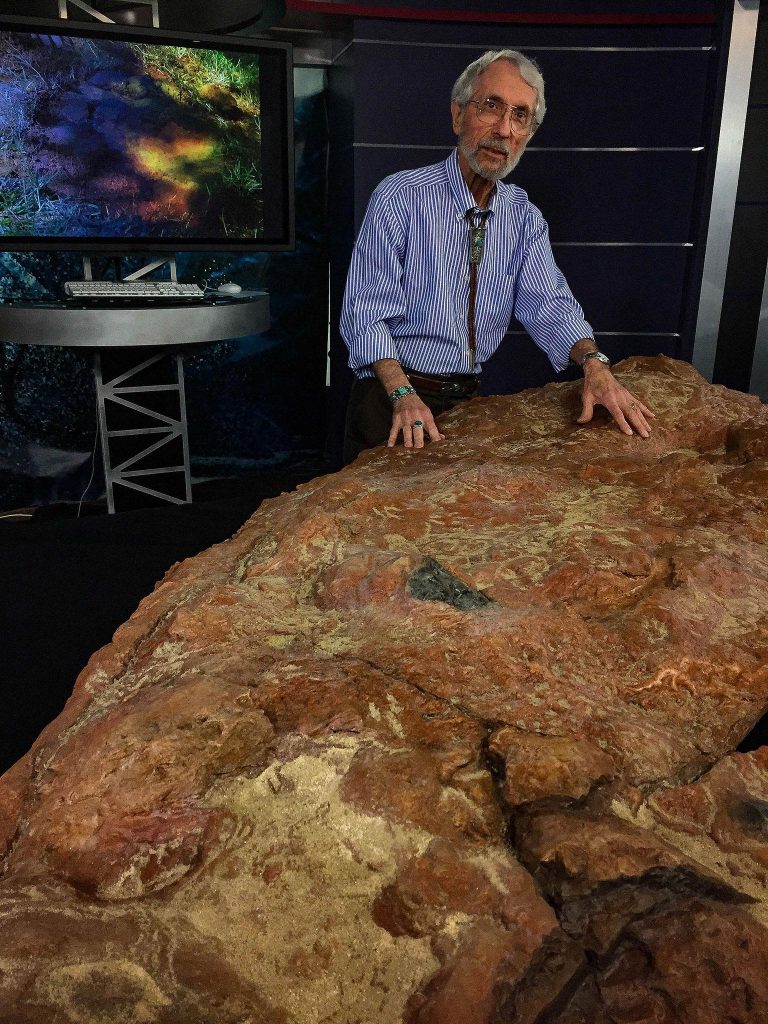
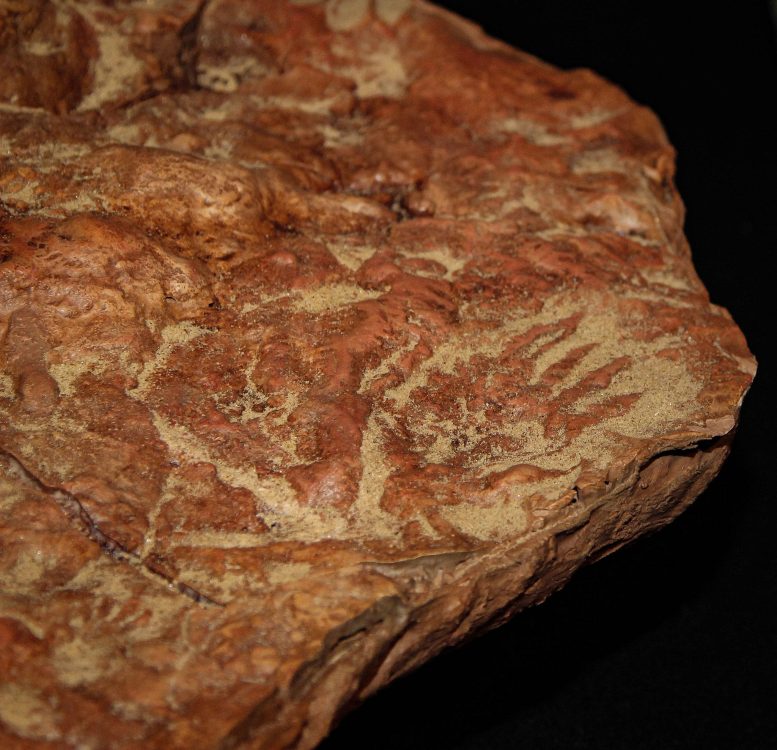
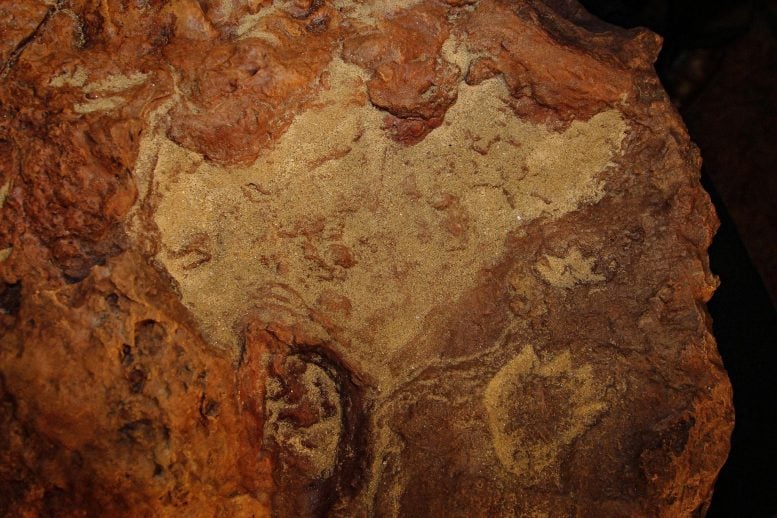
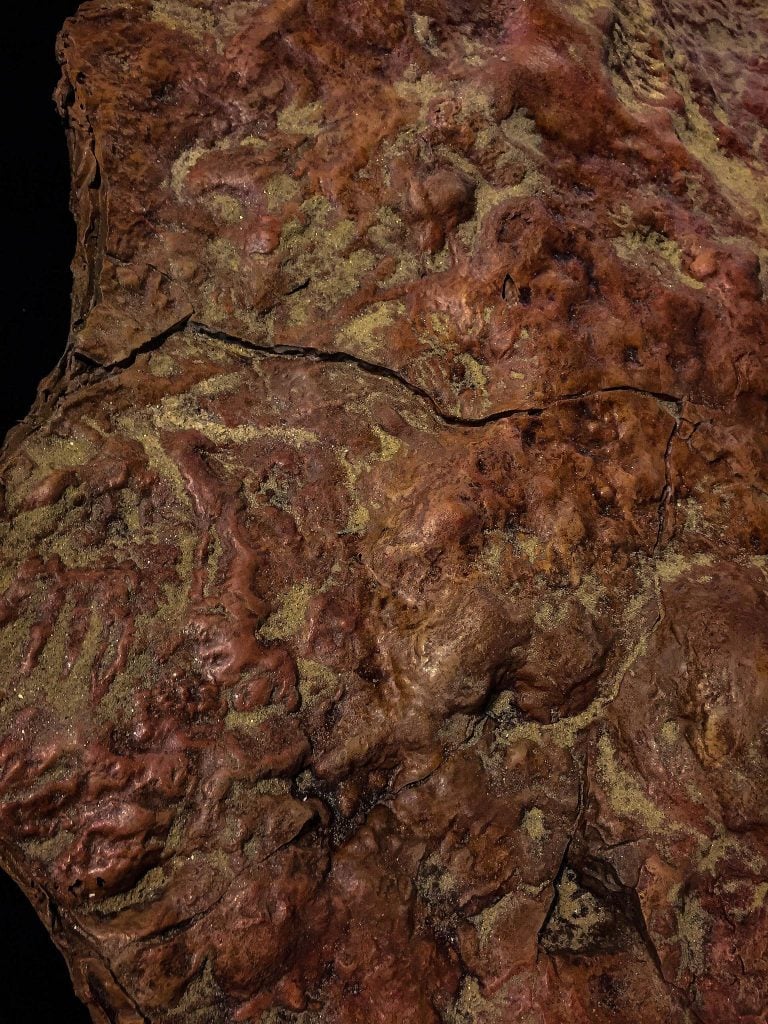
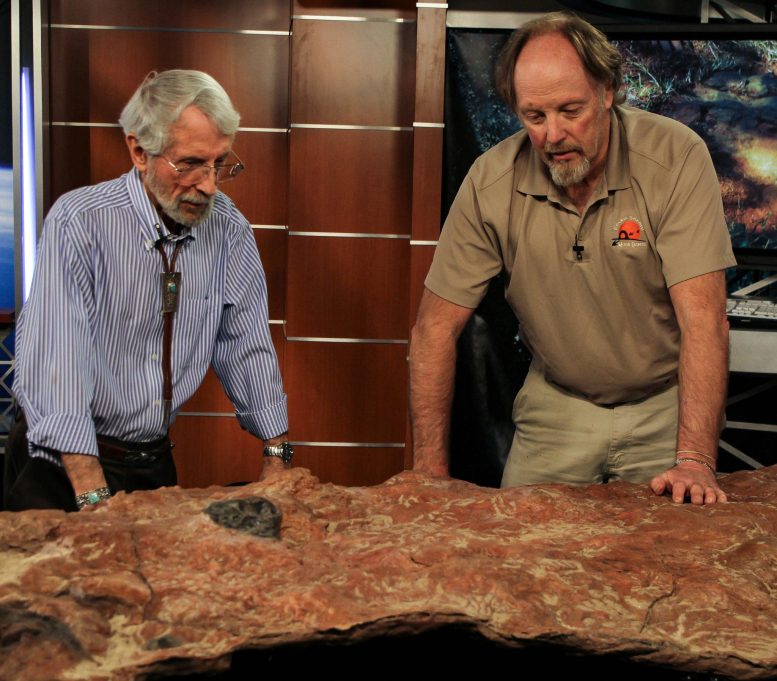
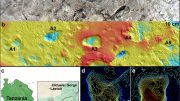
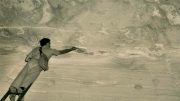
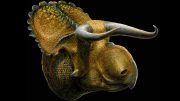
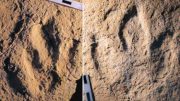
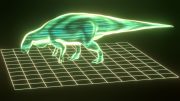
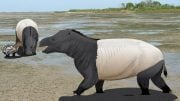
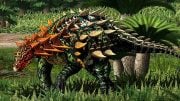
I love all the pictures. What sort of soil condition can record both the ‘squirrel size’ mammal tracks and ‘tank sized’ dinosaurs? I would think that by the time the ground can support a tank size creature, it would be much too hard for a squirrel to make an imprint.
So answer me this? Why is it all of the cave drawings have real dinosaurs drawn in full flesh? Do you really believe what the atheists want you to believe that dinosaurs were before humans? If so, how could they possibly have done this? And by the way, there are more than one imprints of humans at the same level as dinosaurs which have been discovered.
No! There are not any human prints at the same level as dinosaurs, When you say such outrageous things, Make sure you site your information, It’s wrong! I suggest you go to school and learn something instead of blindlessly taking everything you read off of the internet as fact